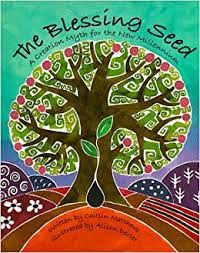Creation Myths
Listen to the Recess! Clip
| Author | Kevin Shortsleeve |
| Air Date | 12/27/2006 |

Creation Myths Transcript
Inevitably, many children ask the question, “How did the world begin?” And so it is a basic rite of childhood, and a basic rite of enculturation, that children are often taught a traditional tale of where the earth, sky, men and women, flora and fauna all came from. And perhaps it is because creation myths tap into a child’s natural state of wonder that they are, often, the most intriguing aspect to any mythological system.
A Comanche creation myth explains that men were made out of dust swirling from the four principal directions. A traditional Hungarian tale pictures an old god draped in robes of the night sky who sends his golden haired son to the depths of the waving, blue sea where he awakes the sleeping seeds of creation. The Norse thought that a giant and a cow were the first two living things and that they came into being by popping out of a huge slab of melting ice. A fascinating place to begin exploring the creation myths is with the children’s book, In the Beginning: Creation Stories from Around the World, by Virginia Hamilton, with illustrations by Barry Moser. The volume relates twenty-five creation myths from such diverse cultures as China, Tahiti, Micronesia, and Australia. Moser’s 42 dramatic illustrations add power to a rich and varied collection of tales.
Some children’s pictures books seek to refashion the creation story from the book of Genesis. Phyllis Root’s Big Momma Makes the World is one such tale, featuring a down-home matriarch and her babe in arms as they summon up the world in seven days, with a slangy and sassy attitude. Instead of saying “and God saw that it was good,” for example, Big Momma says, “That’s good. That’s real good.” And with a tip of the hat to a more recent view on creation, on the sixth day Big Mama “finish[es] things off in one big bang.”
A potentially thought provoking and possibly controversial picture book is The Blessing Seed: A Creation Myth for the New Millennium by Caitlin Matthews. Mathew’s tale is a retelling of the story of Adam and Eve but leaves out the idea of original sin. In place of original sin, Mathews posits an “original blessing.” In an author’s note, Mathew’s states that she hopes the text will help some readers to “reassess [their] ideas about our role as human beings.” Whether you are talking about biblical tales, native traditions, or new age revisions, tales that celebrate the creation of the world cannot fail to captivate, and often they incite wonder at the chaos from which order emerged.